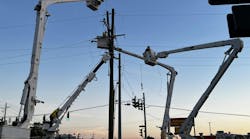"A smart man makes a mistake, learns from it and never makes that mistake again. But a wise man finds a smart man and learns from him how to avoid the mistake altogether,” said Roy H. Williams, a best-selling author and marketing consultant.
If we all took this advice and learned from the mistakes of others, there would be fewer injuries and incidents in the workplace. Until then, we will strive to investigate, educate and prevent the unsafe acts and conditions that cause unfortunate outcomes.
Despite our best effort to protect our workers in the field, incidents happen, and as a result, you may be involved with the investigation. In that situation, your goal should be to prevent future occurrences of similar negative events. Here are 10 tips and tactics to help you put your interview subjects at ease, obtain quality information and get the true story of what happened during the incident.
1. Be prepared.
As with any incident that occurs in the workplace, quick response is essential. Have your investigation kit stocked and ready to go. Some essentials of the kit should include personal protective equipment, camera with flash for photos and video, measuring tape, note paper or personal journal, cell phone and charger, flashlight and Tylenol.
2. Make the incident site safe and secure.
After you arrive on the site of an incident, ensure that anyone who has been hurt gets medical assistance. You will need to ensure that the scene is safe and the equipment has been de-energized. Next, confirm that your managers or on-site supervisors have identified all witnesses and collected contact information.
3. Respond to the incident site promptly but don’t rush in.
Be observant to get the full picture. Note the positions of the people and the equipment. Collect the five Ws: who, what, where, when and why.
4. Start your root cause analysis.
Identify the direct causes and develop the chain of events that led to the event. Identify the underlying factors that will help identify the root cause of the incident.
When appropriate, ask yourself “Why?” five times as in this example: Why did the employee climb out onto the structure? Why did the employee fall 10 feet? Why was the employee not wearing the appropriate fall protection? Why was the use of appropriate fall protection not enforced? Why have we not trained our employees on the appropriate selection and use of fall protection equipment?
Now incorporate these types of questions into your witness and management interviews.
5. Realize that interviewing employees can be the tough.
Interviewing witnesses and injured employees takes skill and learned techniques. It can be stressful on the employee as well as the investigator. For best results, try to keep the crew members separated and pull the workers aside individually. The more the employees talk, the more the story will change and things will get convoluted. Also, if you don’t gain the trust of the individuals you interview, they will not tell the truth and the entire interview will be pointless.
6. Be sensitive.
The worker may have witnessed anything from a minor incident to a serious fatality. Investigators should treat the employee like he or she lost his or her best friend. If the victim has gone to the hospital, the outcome may not be certain at the point of the incident.
7. Put them at ease.
Instead of sitting directly across from the interview subjects at a conference table, change into field attire and consider sitting next to them on the tailgate of their truck. Allow the employee to share his or her story about the incident. After the interview, supplement your notes with the details from the interview.
8. Ask the right questions.
Start out with open-ended and broad questions that can’t be answered with a yes or a no. Also, instead of asking leading questions, ask straight-forward questions, which will show respect to the witnesses and the victim and show that you, as an investigator, cannot be intimidated.
9. Engage the witnesses and injured employee as part of the solution to prevent similar instances.
Ask them: “In your opinion, what caused this incident and how would you prevent it from happening again?” Listen intently; the best investigators are the best listeners. You also need to try to help the witness and/or victim relax. Emphasize the reason for the investigation if it is for prevention.
10. Close the interview on a positive note.
Do not intentionally intimidate, interrupt or jump to conclusions. Do not show any inappropriate emotions or make “wise cracks” about the incident. Remember, 58% of your communication is non-verbal and 38% is your tone of voice.
Applying these 10 tips to every incident, large or small, will help you succeed in collecting necessary information and make you a superb investigator. You will walk away knowing you have done the best job possible in some of the worst-case scenarios.
Thomas Ray ([email protected]) is a safety specialist for City Utilities in Springfield, Missouri. He has more than 22 years of safety and incident investigation experience.


